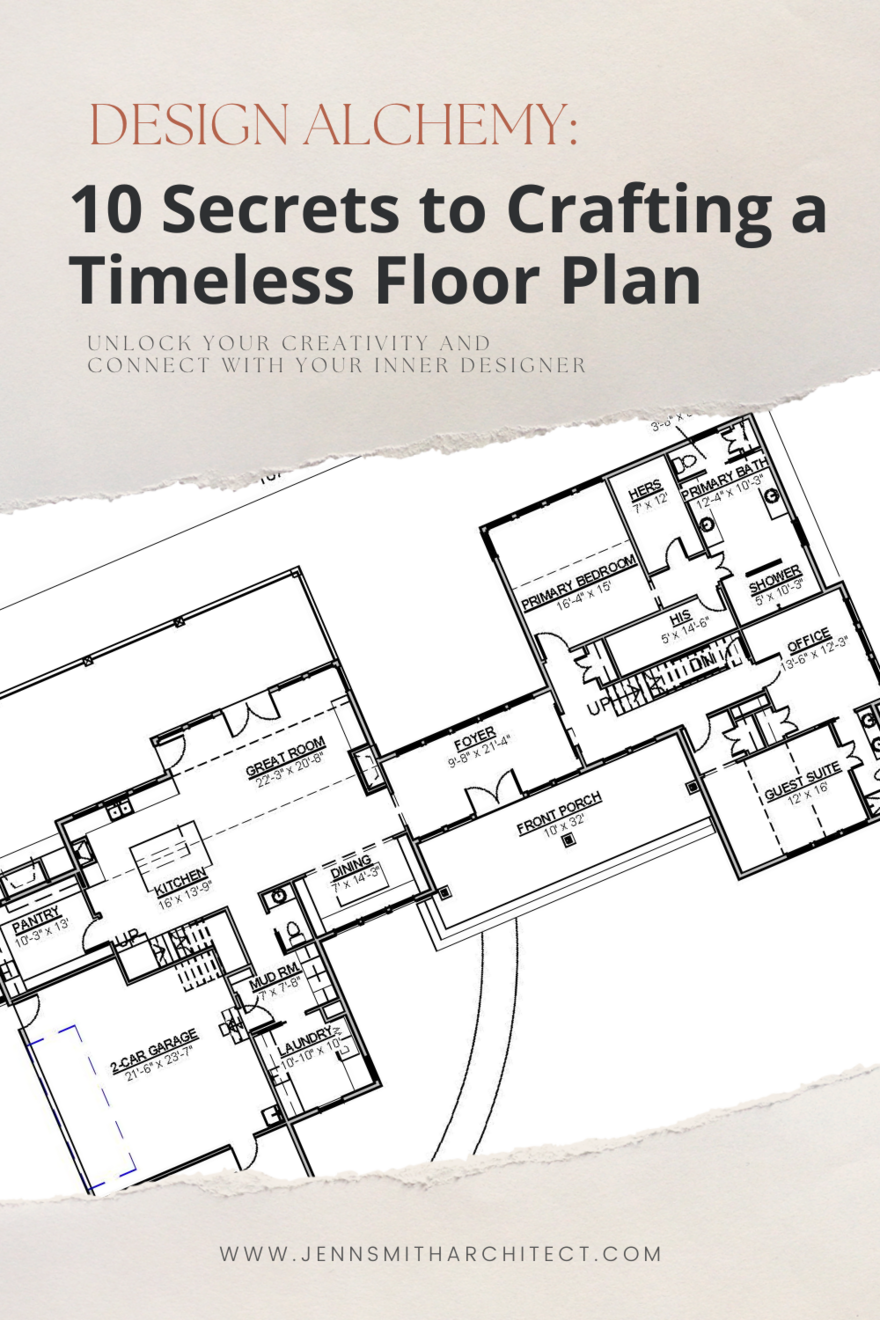Design Alchemy: 10 Secrets to Crafting a Timeless Floor Plan

Creating a home that stands the test of time involves more than just studs and drywall—it's about crafting a space that reflects your vision and supports your lifestyle. And the key to achieving this isn't speed; it's your commitment to the design process.
Because building your dream home is a journey that begins long before the foundation is laid—it starts with the careful curation of design elements that weave together to create a home that stands the test of time.
Each step, from crafting your vision board to understanding your property's nuances to finalizing your material selections, is integral to a timeless home design that not only meets your needs but surpasses your expectations.
I can't stress the importance of patience enough. Rushing through the design phase might seem tempting, but it often leads to stress and overwhelm during construction. Every moment spent refining and perfecting your plan is an investment in a home that resonates with your values that endures for generations.
If you're ready to embark on this journey, I'm here to guide you through each step, ensuring that the wait for your dream home is just as rewarding as its realization.
To ensure your home supports you well into the future, here are some timeless design principles I recommend incorporating:
1. Open Floor Plans:
Removing barriers between living areas fosters a sense of openness and promotes interaction, allowing natural light & energy to flow through your home. Open concept floor plans create seamless transitions between spaces, ensuring easy navigation from the entrance to the heart of your home.
2. Clear Circulation Paths:
Designing pathways that connect key areas—such as from the entrance to the living room or from the kitchen to the dining area—facilitates intuitive movement. These pathways enhance functionality while maintaining a harmonious flow between spaces. Fostering an environment that effortlessly supports your daily movements and activities.
3. Strategic Room Placement:
Begin by embracing the uniqueness of your property. Understand the play of natural light, capture breathtaking vistas, and align rooms to embrace the serenity of the surroundings (or avoid a busy street). Aligning rooms this way enhances comfort and livability creating a layout that harmonizes with its surroundings.
4. Zoning and Functionality:
Consider the functionality of each room and its relationship with adjacent spaces. Designating specific zones within your home for different purposes optimizes space without compromising on the overall flow. An example of this would be to have private spaces, such as bedrooms and offices on the opposite side of the house away from noisy areas like the kitchen and family room.
5. Natural Traffic Patterns:
Designing your home's layout around natural movement patterns ensures intuitive pathways and ease of use. This might be having your garage located near the kitchen, so you can easily drop off groceries without walking across the entire house. Or placing the laundry room near the primary closet for greater convenience.
6. Efficient Storage Solutions:
Integrating smart storage options keeps clutter at bay, preserving a clean and unobstructed layout. Try incorporating storage solutions into the design of your home by utilizing space under the stairs or adding built-in floor-to-ceiling cabinets. Also, take stock of your possessions and create space in your home where these items can live. Especially, holiday decor, family heirlooms, off-season clothing, cleaning supplies, and extra towels and linens… just to name a few.
7. Properly Sized Rooms:
Proportionate room sizes prevent overcrowding or underutilization, contributing to a balanced and functional layout. Take into account the furniture you already own and ensure you provide adequate space. If you entertain often, ensuring you have a dining room big enough to accommodate a large group might be a priority. Also, take into account bedroom sizes, many online plans show rooms at 10’ x 10’, but in reality that’s a very tight space once you get a full size bed in there.
8. Visual Continuity:
Consistency in design elements fosters a cohesive and unified aesthetic throughout your home. This is easily accomplished with the use of your vision board. Typically, you’ll start to notice a theme, whether it’s a color palette or a specific architectural style.
9. Indoor-Outdoor Integration:
Seamless transitions between indoor and outdoor spaces extend your living area and infuse a sense of openness. Adding sliding glass doors and lots of windows creates a connection to Mother Nature that never goes out of style.
10. Functional Focal Points:
Creating focal points adds visual interest and helps in organizing the layout around central features. Focal points can be anything from a fireplace, a vaulted ceiling, or a piece of art. Think about how you can add a wow factor to the primary spaces in your home.
Embracing these design principles lays the foundation for a home that evolves with you, supporting your lifestyle while retaining its timeless charm.
For more insights into crafting beautiful homes and to join our community of design enthusiasts, follow me on Instagram for regular updates, tips, and inspiration.
Let's embark on this journey together to create a space that reflects your vision and sustains your family for years to come.
0 comments
Leave a comment
Please log in or register to post a comment